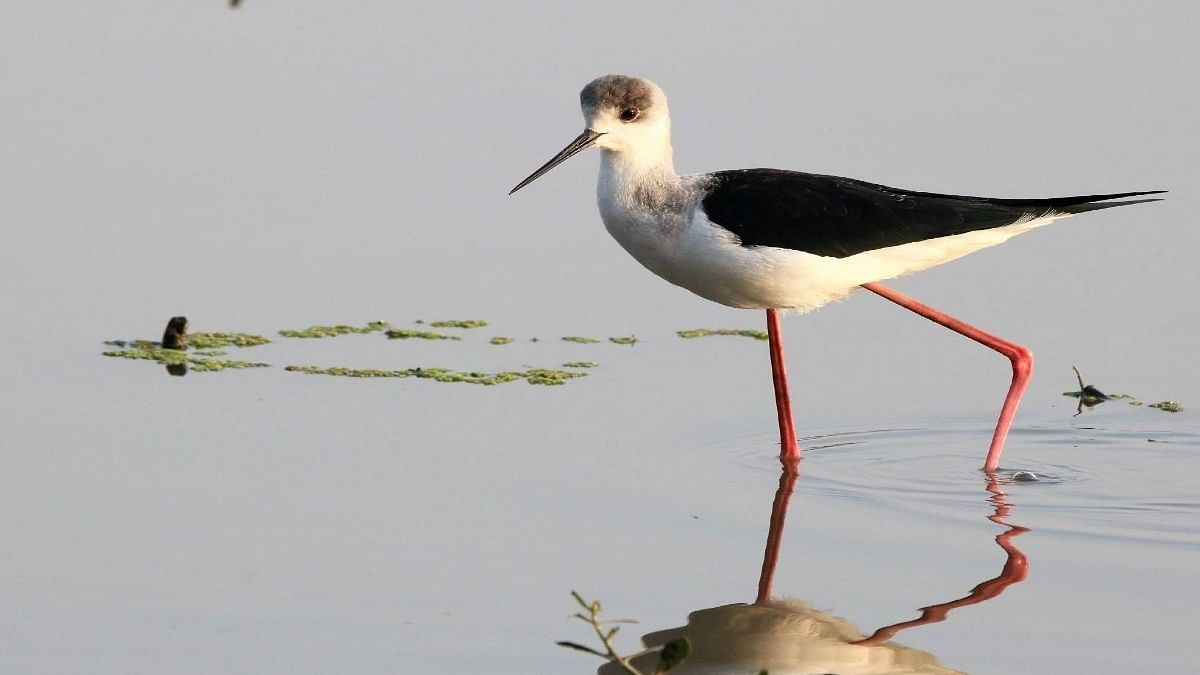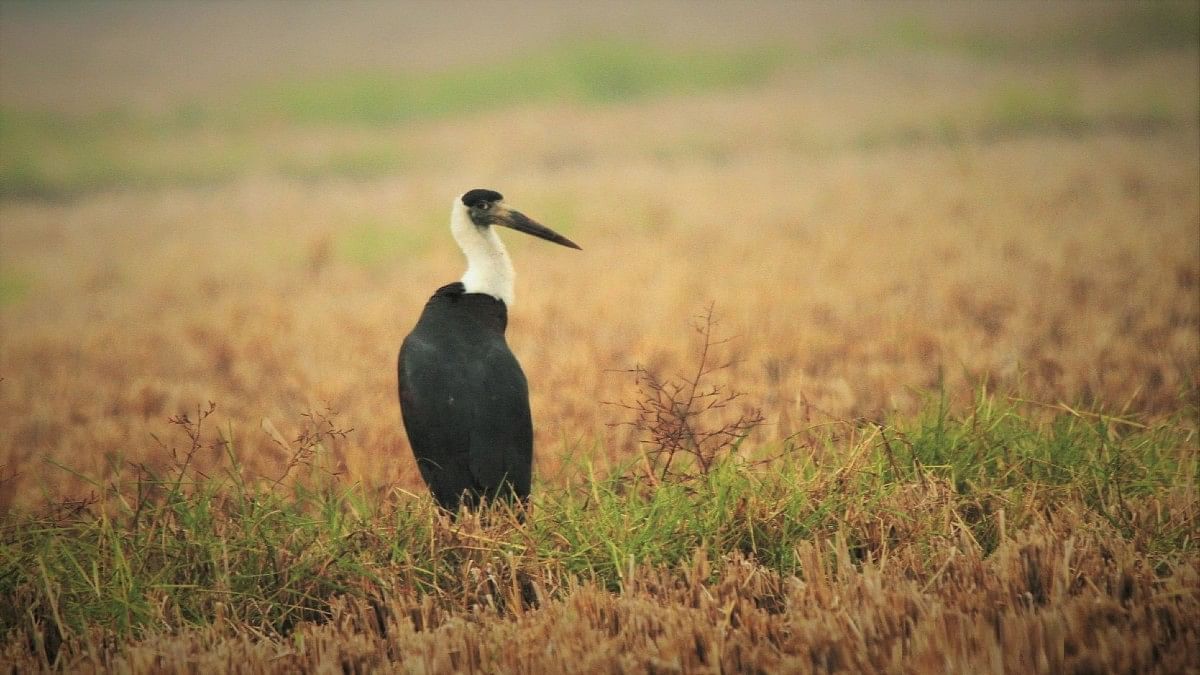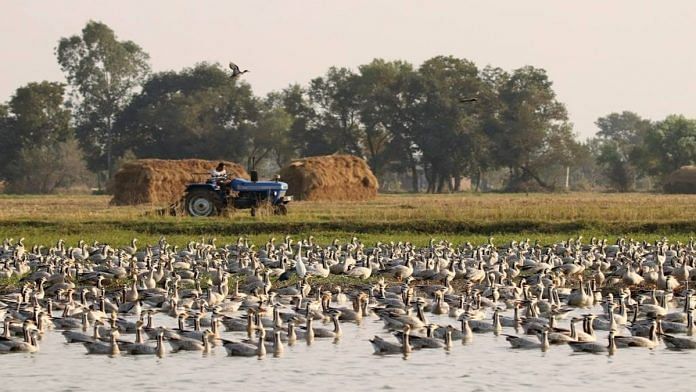Gharana: Towards the start of every year, bird-watchers from across the region travel through a maze of lanes in Jammu & Kashmir’s R.S. Pura — located along the international border (IB) and nearly 30 kilometres from Jammu city — to reach the Gharana Wetland, named after the village where it is located.
The marshy wetland, parts of which are also in Pakistan, hosts a large variety of migratory birds who fly in from Central Asia, Siberia and other parts of the world. While the birds congregate here every year, the number of species spotted this time has gone up to around 40 from the usual 25.
One of the main reasons for this, according to wildlife officials, is peace at the border between India and Pakistan.
The absence of cross-border firing since February 2021 due to the reiteration of the 2003 ceasefire agreement between the bordering nations, has made the wetland a haven for birds, wildlife officials said.
While the Bar-headed Goose, Northern Pintail, Northern Shoveler, Black-winged Stilt and Grey Heron are among the usual visitors, the new species spotted at the Gharana Wetland include the White-breasted Ibis, Pied Kingfisher and Eurasian Wigeon. Woolly-necked Storks, rarely spotted in Gharana, have this time flown to the wetland in large numbers.

Suresh Kumar Gupta, chief wildlife warden, Jammu & Kashmir, said peace on the border has undoubtedly made the environment more conducive for these birds. “Efforts have also been made by the department to make the area disturbance-free by acquiring neighbouring land,” he told ThePrint.
Also Read: Sampling DNA from air could help track animals, transform wildlife monitoring
Why do birds migrate to Gharana
Wetlands are areas where the soil is saturated either permanently or off and on with water, due to natural or artificial reasons, as a result of which they may support a rich ecosystem of aquatic and terrestrial species. Wednesday happens to be World Wetlands Day.
“Migratory birds coming to wetlands are mostly aquatic birds and migrate due to harsh conditions in their native regions. Many species migrate to these comparatively warmer areas for food, while some others come for breeding,” Dr Manoj Kumar, ornithologist, department of zoology, Punjab Agricultural University (PAU), Ludhiana, told ThePrint.
The Gharana Wetland hosts a population of nearly 25,000 birds of different species every winter season, most of which are migratory, according to the wildlife department. A census is currently underway to get an estimate of the number of birds that have arrived this time.

The migratory birds start reaching Gharana between the last week of October and first week of November. The maximum birds flock to the area in December and January, and they start returning to their native lands between the end of February and first week of March.
According to initial estimates of the ongoing census, nearly 5,000 Bar-headed Geese have been spotted at Gharana and surrounding areas this time. Bar-headed Geese also migrate to Ladakh to breed in the summers, wildlife officials said.
Apart from aquatic vegetation and insects, the migratory birds that come to Gharana also feed on agricultural crops in the nearby fields, which sometimes becomes a bone of contention between the local farmers and wildlife department. To avoid this situation, the wildlife department also releases fish in the wetland as food for these birds.
“The birds feed on open fields, especially wheat sprouts, which are present at the time they arrive at Gharana. This creates confrontation between farmers and the wildlife department. Efforts are always made to pacify the farmers,” Tahir Shawl, joint director, J&K State Forest Research Institute, and former wildlife warden, told ThePrint.
He added that there were times when land mines were located close to the Gharana wetland, but now, peace has created conducive conditions for these birds.
In Gharana village, a group of elderly men sitting outside their homes told ThePrint that they too feel that more birds have flown into the wetland this time.

Jeet Raj, 70, a farmer, said 2021 was the first year after decades that witnessed no firing from across the border. “We have seen shells falling on the roofs in villages along the border. The firing always disturbed these birds, due to which they flew away,” he added.
Fear of bird flu
Meanwhile, the fear of bird flu is looming large at Gharana Wetland, where many migratory birds tested positive even last year. Several teams of wildlife officials are keeping a close watch on the birds.
Simple Singh, block officer of the wildlife department at Gharana Wetland, told ThePrint that the teams have collected samples to check for bird flu. “Even last year, there were cases of bird flu, due to which higher officials are not taking any chances this time,” Singh added.
(Edited by Gitanjali Das)
Also Read: Bird flu found in migratory birds in Himachal, cases in 4 other states – all you need to know






